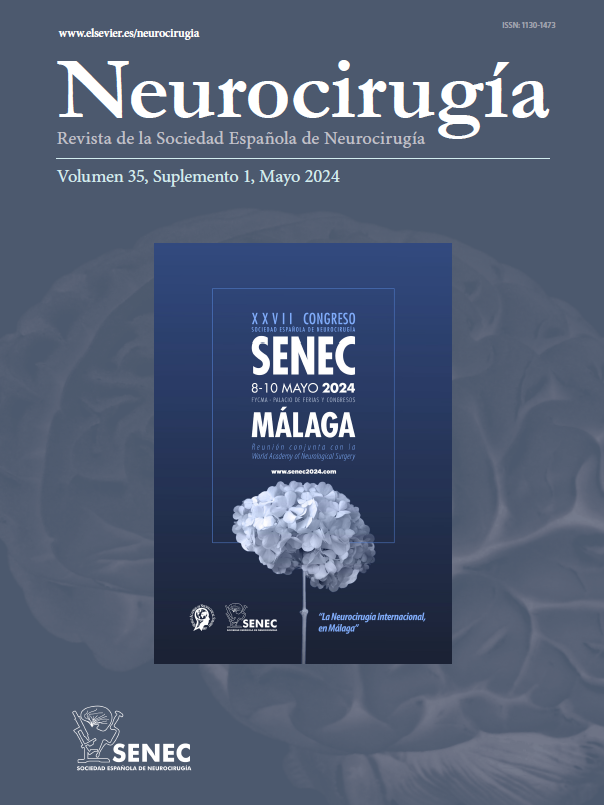O-013 - MICROSURGICAL TREATMENT OF CRANIOPHARYNGIOMAS: OUR SERIES AND LITERATURE REVIEW
Hospital Universitario Ciudad de Jaén, Jaén, Spain.
Introduction: Craniopharyngiomas constitute 2-5% of primary intracranial tumors, predominating in childhood with a second peak in adulthood. Its benign histology contrasts with its locally aggressive behavior due to adhesion to optic pathways, hypothalamus and vascular structures. Continuous microsurgical refinement highlights the modern microsurgical treatment paradigm.
Objectives: To analyze our experience with the microsurgical treatment of craniopharyngioma.
Methods: Prospective cohort of patients with craniopharyngiomas operated underwent microsurgical treatment in our center between 2017 and 2023.
Results: Between 2017 and 2023, 12 patients underwent transcranial craniopharyngioma surgery, 7 males and 5 females with age range of 14-64 years. The MRI mean diameter was 33 mm (28-45). Visual disturbance 100%, followed by hypopituitarism (74%) and diabetes inspida (50%). Half of the patients have cognitive impairments. Almost 20% of patients presented with hydrocephalus. In 8 patients resection was complete, in one patient combined endoscopic-microsurgical approach achieved complete resection, and in 2 cases partial resection with neoadjuvant radiotherapy. 9 patients (82%) showed visual improvement, remaining stable in the remaining. There were no deaths during perioperative or follow-up (48 months) and 90% of patients were independent (grade 1-2 on the modified Rankin scale). Histology was 10 adamantinomatous craniopharyngiomas and 1 papillary. There were 2 recurrences and 82% remained progression-free during follow-up. CSF fistula in 1 patient and another one required shunt for hydrocephalus. One patient had improvement of pituitary function after surgery, 8 (72%) remained stable, 2 (18%) developed panhypopituitarism.
Conclusions: Total microsurgical resection while minimizing damage to the hypothalamus continues to be the best initial option in the treatment of craniopharyngioma. Our data and the literature support an individualized selection of the surgical approach allowing safe and effective resections. Due to their high morbidity, multidisciplinary and multimodal management of these tumors is required.







